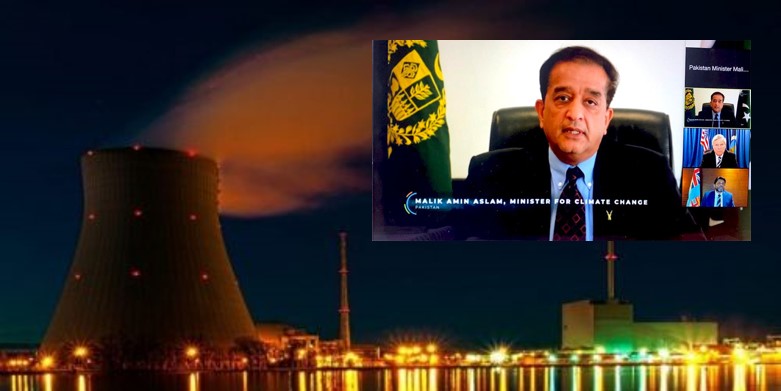In a much anticipated international conference on Climate Change, Pakistan assured the international community that it will shift to 60% clean energy and convert 30% of its overall vehicular fleet to electricity by 2030.
Addressing the US-initiated’ Leaders Summit in Washington, Special Assistant to the Prime Minister on Climate Change Malik Amin Aslam also urged developed nations to fulfil their commitment to help others make this transition from carbon-based to clean energy. “Now, the world needs to do more on climate finance. It needs to deliver climate finance for countries in energy transition . . . . honour the commitment of $100 billion a year” he states.
Climate Summit 2021
Started on the World Earth Day, in the Leaders Summit there were 40 countries who attended the two-day virtual summit and ended with big pledges from the world’s major carbon emitters, China, the US, India and Russia. “Nations that work together to invest in a cleaner economy will reap the rewards for their citizens,” says the US President Biden. He also made the biggest pledge by promising to cut his country’s carbon emissions by 50 to 52% from 2005 levels.
Prime Minister Yoshihide Suga raised Japan’s target for cutting emissions to 46% by 2030, up from 26%. Chinese President Xi Jinping said China expects the country will achieve net zero emissions by 2060.
Pakistan Energy Scenario & Climate Change
Currently Pakistan gets 64% of its electricity from fossil fuels, with another 27% from hydropower, 5% from nuclear power and just 4% from renewables such as solar and wind. However, “Pakistan is really at the forefront of this climate disaster.” Malik Amin Aslam rightly pointed out that Pakistan contributes less than 1% to global emissions, yet it’s one of top 10 on the list of most vulnerable countries because of its topography and geography.
He also said Pakistan faces the Himalayan glaciers which are melting in the north, the arid zones which are getting heat waves like never before, cyclones in the south and rising sea levels and floods in the plains. Besides in recent years the frequency and intensity of these disasters had gone up, affecting 220 million people.
A Dubious Pledge
However, it seems very difficult the commitment Pakistan made in the Leaders Summit, would be fulfilled in the stipulated time. The commitment is already the targets of government’ Alternative and Renewable Energy (ARE) Policy 2020 and Pakistan 1st Electronic Vehicle Policy, yet specific and concrete measures so far on behalf of government to attain these targets are still missing to see the daylight.
There is no roadmap and planning to shift our major energy infrastructure on renewable specially wind and solar units. Pakistan has never carried out any study how much money needed for this infrastructural shift and what would be the cost of electricity per unit of this transition. There is no deny alternative power production units are being installed, but the pace is very slow.
As an example Pakistan started working on wind power in 2006, started generate wind electricity in 2012, and in 15 years generating only 1248 megawatt, which is less than 2% of the total production. While in Baluchistan there is provision of massive wind corridors, but no transmission lines have been planned to supply electricity all over Pakistan.
Reliance on Coal
On the other hand when the world is pledging to reduce their reliance on coal and other harmful sources of fuel for power generation, Pakistan is instead celebrating a number of coal power projects planned within the scope of CPEC. The country has commissioned seven Chinese-funded coal plants as part of the sweeping China-Pakistan Economic Corridor project which are expected to add up to 6,600 megawatts of capacity to the grid. Coal is widely known as “dirty fuel”, and its combustion leads to CO2 emissions, which are a major cause behind global warming.
Though China has also funded new renewable energy but at a smaller scale, with six wind farms set to generate just under 400MW, a 100MW solar project and four hydropower plants expected to produce 3,400MW by 2027. So it looks very difficult for Pakistan fulfill its pledge, committed in the Leader Summit on Climate Change.
By
Editorial, Infocus


